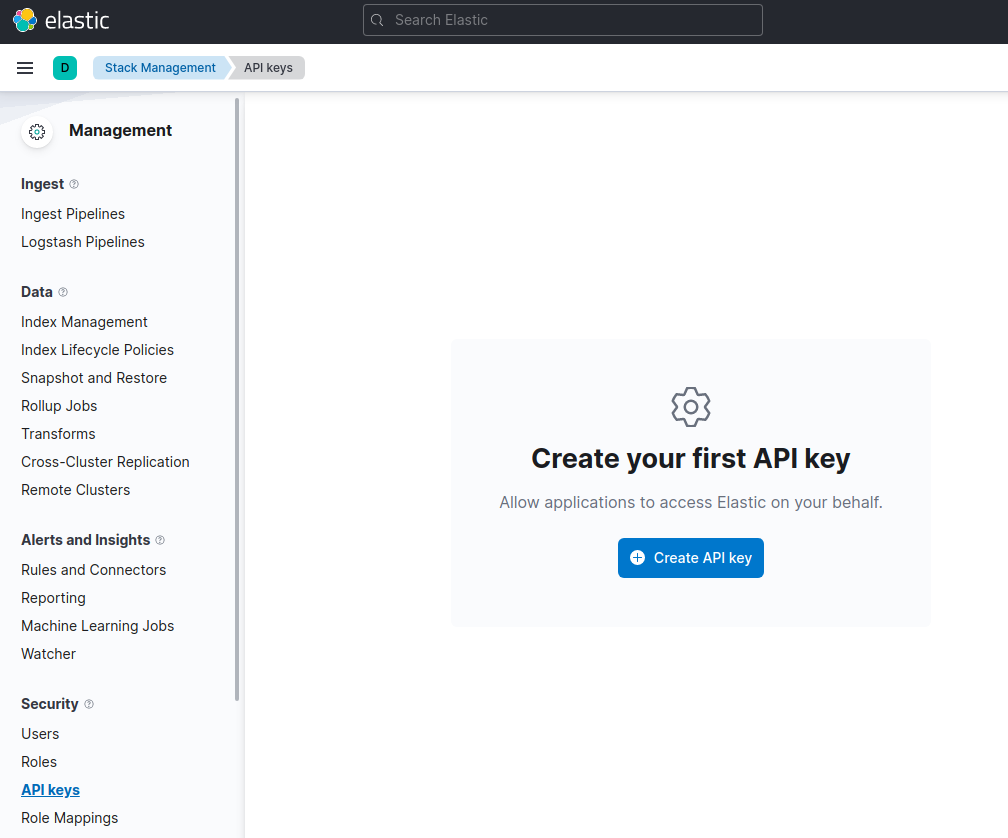Quickstart
This guide shows you how to install the Elasticsearch Python client and perform basic operations like indexing or searching documents.
Requirements
Installation
To install the client, run the following command:
$ python -m pip install elasticsearch
Connecting
You can connect to Elastic Cloud using an API key and the Cloud ID.
from elasticsearch import Elasticsearch
client = Elasticsearch(cloud_id="YOUR_CLOUD_ID", api_key="YOUR_API_KEY")
Your Cloud ID can be found on the My deployment page of your deployment under Cloud ID.
You can generate an API key on the Management page under Security.

Using the client
Time to use Elasticsearch! This section walks you through the most important operations of Elasticsearch. The following examples assume that the Python client was instantiated as above.
Creating an index
This is how you create the my_index index:
client.indices.create(index="my_index")
Indexing documents
This indexes a document with the index API:
client.index(
index="my_index",
id="my_document_id",
document={
"foo": "foo",
"bar": "bar",
},
)
Getting documents
You can get documents by using the following code:
client.get(index="my_index", id="my_document_id")
Searching documents
This is how you can create a single match query with the Python client:
client.search(index="my_index", query={"match": {"foo": {"query": "foo"}}})
Updating documents
This is how you can update a document, for example to add a new field:
client.update(
index="my_index",
id="my_document_id",
doc={
"foo": "bar",
"new_field": "new value",
},
)
Deleting documents
client.delete(index="my_index", id="my_document_id")
Deleting an index
client.indices.delete(index="my_index")